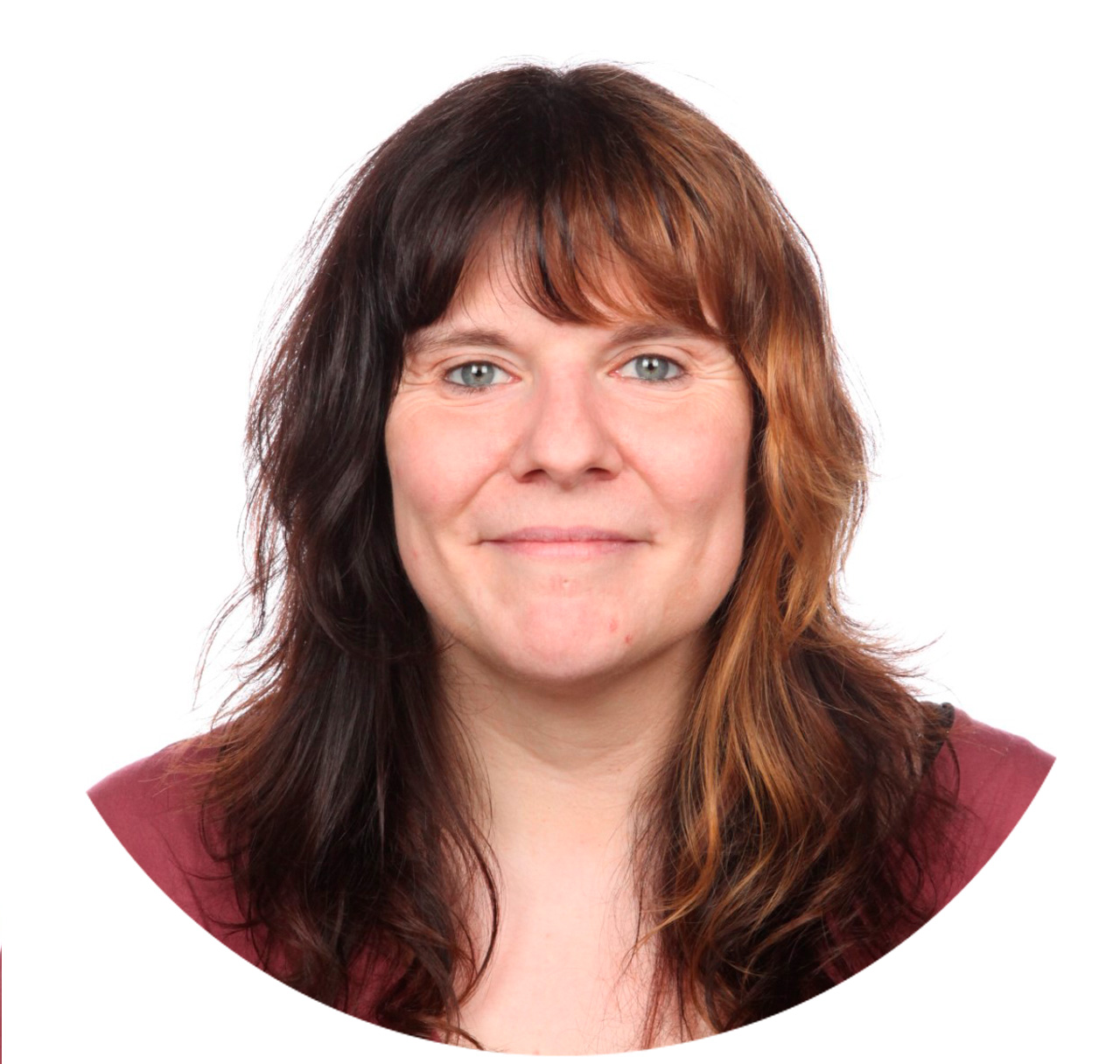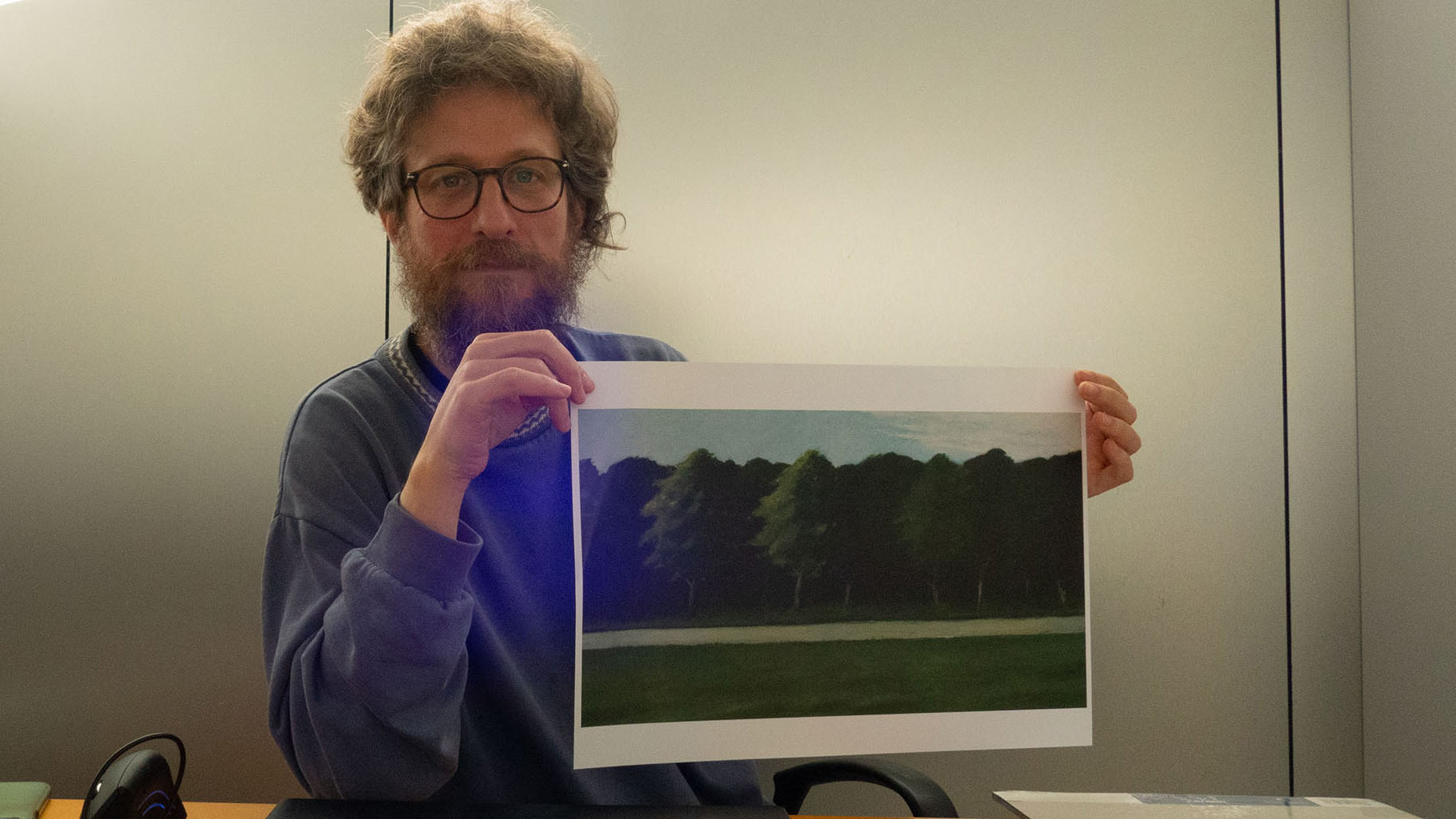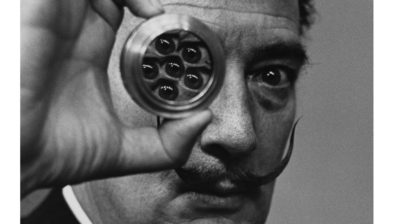Pep Vidal, scientist and artist, is carrying out a project with the research teams of the Department of Medicine and Life Sciences (MELIS-UPF). The project is called ‘Biomedical variations on a Hopper painting’ and explores the artistic fact inherent to scientific research. It takes place as part of the second artistic residency offered by the MELIS-UPF and the Fundació Privada Antoni Vila Casas. This is one of the many collaborations between artists and research centres that take place at the Barcelona Biomedical Research Park (PRBB).
Vidal is a mathematician, physicist, artist and university professor. He is dedicated to studying the infinitesimal changes that occur in complex systems. To do this, he navigates between artistic and scientific research, which he sees as not very different. “I don’t see a big difference between them. You work on a subject that interests you and you have your references, resources, deadlines and a context,” he explains. He admits that he didn’t see this relationship when he was only doing scientific research, and he believes that one of the functions of the residency is precisely this: to make the relationship between these two fields of knowledge visible.
Discovering that art is inherent in the scientific process
Vidal’s career has also been marked by seemingly small changes. He explains that while working on his doctorate in physics, he enrolled in a photography course at a community centre. There he discovered the artistic research processes of photographers such as Cindy Sherman and Sophie Calle. He was fascinated because he realised that the processes of artistic creation had much in common with scientific research. He also found it interesting that these artists’ research questioned them personally, as they were dealing with issues from their own lives.
When he presented his doctoral thesis in physics at the Autonomous University of Barcelona (UAB), he did so in the form of an artist’s book. This is how he won the 2014 Miquel Casablancas Prize for Visual Arts in the publication category. The volume, entitled ‘Desenvolupament d’algorismes numèrics per al càlcul de la topografia dels miralls per a un sincrotró’, went beyond the UAB’s repository of doctoral theses. It can be found in several bookshops and museums such as the Museo de Arte Contemporáneo de Barcelona, the Museo Nacional Centro de Arte Reina Sofía (Madrid) and The Museum of Modern Art (New York).
After turning his thesis into a work of art, he continued to explore the idea of interpreting scientific research as artistic pieces. In his view, scientific processes have artistic value in themselves, while at the same time they can be based on artistic contexts. Over the past decade, he has received several awards and grants from the art world and has had more than a dozen exhibitions around the world. His work has been exhibited in places such as the Abrons Arts Center in New York, the ADN Gallery in Barcelona, the National Art Museum of Catalonia, the LMNO Gallery in Brussels and the Maczul in Maracaibo (Venezuela), among others.
“I see no difference between scientific research and artistic research. You work on a subject that interests you and you have your references, your means, deadlines and a context.”
Pep Vidal, artist in residence at MELIS-UPF
He has also been involved in university teaching, both in the artistic field, on the Art degree at the Universitat Oberta de Catalunya, and in the scientific field. He is currently teaching in the Physics degree at the UAB. There he incorporates art in the optics laboratory classes and in the Final Degree Projects, which he directs. He helps physics students to establish dialogues with people from the artistic field who come to his classes, or with artistic works, such as those in the ‘A=A, B=B’ exhibition at the Fundació Antoni Tàpies, which he curated. In the Final Degree Projects, his students develop a research project in physics based on an artistic event.
The hybridisation of art and scientific method
The artist situates the beginning of the residency project at MELIS-UPF in the exhibition ‘A=A, B=B’, which he curated at the Fundació Tàpies. The exhibition presented 13 works by different artists that referred to scientific processes and were arranged in the structure of a scientific article. The show thus explored the hybridisation between art and the scientific method through the figure of Tàpies and the book “The New Vision of the World”. This book, written in 1954, was a collection of scientific and philosophical talks and inspired several of Tàpies’ works.
Vidal proposed to four physics students that they study the pieces of “A=A, B=B” from the point of view of physics, mathematics, chemistry or philosophy. These studies were included in the exhibition. It also included a bibliography of the pieces, in the form of a library of the books that inspired the artists in their work. In this way, it brought the treatment of references that come from the scientific field into the artistic field, where they are not usually made explicit.
‘Biomedical Variations on a Hopper Painting’
This is the first time that Vidal has carried out an artistic residency in the context of a research centre. The project he is developing with the scientific teams at MELIS-UPF is based on the idea of system and the painting ‘Road and Trees’ by the painter Edward Hopper. The artist chose this painting because it does not seem to contain much information, but he believes that there is a lot hidden in it.

“I ask each of the Principal Investigators (PIs) and their teams to add elements of their research from this painting using transparent tracing paper that we place on top of it. They can start from an element that is present or missing in the painting, and create a second layer of information in the form of a notepad”, he explains. For him, it is not a matter of disseminating or transforming research into something new and artistic, but of offering a space in which to express scientific research that has artistic value in itself.
“I ask each of the Principal Investigators (PIs) and their teams to add elements of their research from this painting using transparent tracing paper that we place on top of it. They can start from an element that is present or missing in the painting, and create a second layer of information in the form of a notepad.”
Pep Vidal, artist in residence at MELIS-UPF
The result of the residency will be an exhibition that will explore the artistic fact present in science through all the works created by the MELIS-UPF research groups. It will be presented in June, but Vidal would like to continue working along these lines. He believes that this type of project can also help research groups to see their research from a different perspective, but this is more difficult in early stages. “For me, it is important that we can visualise, perhaps with an iteration of the project, that scientific research can have other pathways,” he says. It is this two-way communication between science and art that he explores in his projects.
“For me, it is important that we can visualise, perhaps with an iteration of the project, that scientific research can have other pathways.”
Pep Vidal, artist in residence at MELIS-UPF
In this way, the artist continues a line of research that he is currently pursuing in two other projects, which consist of adding information to already known pictorial works. One of these is the Pedernal project, which he is carrying out as part of the Leonardo grant for researchers and creators in the visual arts, in which he is working with paintings by Georgia O’Keeffe. The other is based on works by Cézanne and will be inaugurated in June at the ADN Gallery in Barcelona. Both projects explore the idea of iteration and accumulation, which both artists have used to depict their favourite mountain on numerous occasions.







